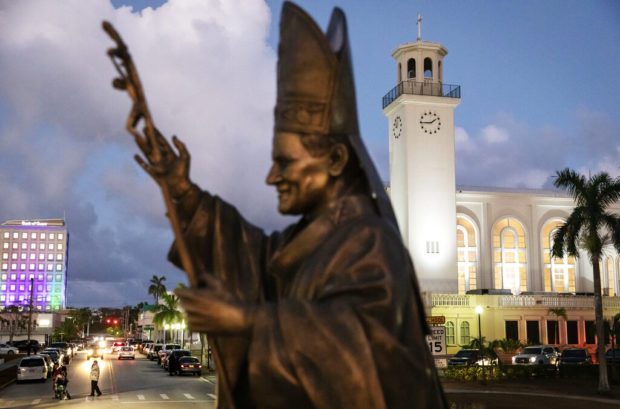Catholicism ingrained in daily life on US island of Guam

Credit to Author: besguerra| Date: Sat, 10 Aug 2019 06:18:17 +0000
HAGATNA, Guam — A towering white cathedral built on the site of Guam’s first church dominates the skyline of Hagåtña, the sleepy capital of this American territory.
It is a symbol of Catholicism on an island closer to Tokyo than Honolulu, where the faith is part of daily life. More than 85% of Guam’s 165,000 residents identify as Catholic. By comparison, it’s 36% in one of the most Catholic cities on the mainland, Boston.
This is also where at least 223 lawsuits have been filed against 35 clergymen, teachers and Boy Scout leaders tied to Guam’s Catholic archdiocese. While the U.S. church has been roiled by the clergy sex abuse scandal for nearly two decades, this island’s faithful are still reckoning with new revelations from survivors, including gray-haired men still grappling with the emotional scars of childhood traumas.
In a place that emphasizes strict obedience to elders and enduring hardship without complaint, these men say they were raised to see members of the clergy as God’s infallible emissaries on Earth.
“Back in the old days, they were untouchable,” said Ramon De Plata, one of those who have filed suit.
Nearly four centuries after the arrival of the first Jesuit missionaries, Catholicism is deeply ingrained in the culture of Guam’s indigenous people, known as Chamorros. Those old enough to remember often cite Pope John Paul II’s visit in 1981 as the most thrilling event of their lifetimes, memorialized by a bronze statue of the now-sainted pontiff designed to slowly rotate on a concrete pedestal. Streets on Guam are often named for bishops and priests, including some now accused of sexually abusing children.
A mural depicting Pope Francis with the hashtag #popeisdope decorates a building along the main shopping district in Tumon. Graduates of a local high school are celebrated at a special Mass at the island’s main cathedral. And a handful of faithful gathered one Saturday at a makeshift altar in a bakery, surrounded by bags of flour and corn, to recite 2,000 Hail Mary prayers.
The feat takes 10 hours.